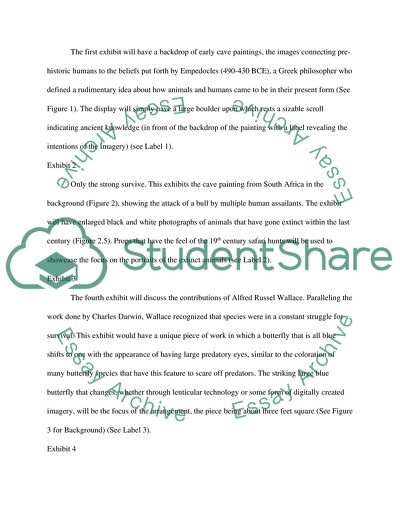Cite this document
(The Roots of Ecology, Natural Selection as it Relates to Ecology Speech or Presentation, n.d.)
The Roots of Ecology, Natural Selection as it Relates to Ecology Speech or Presentation. https://studentshare.org/biology/1779299-write-a-paper-describing-a-physical-museum-exhibit-about-the-roots-of-ecology-natural-selection-as-it-relates-to-ecology-with-exhibits-earth-science-before-ecology-darwinism-and-the-first-scientists-to-call-themselves-ecologists
The Roots of Ecology, Natural Selection as it Relates to Ecology Speech or Presentation. https://studentshare.org/biology/1779299-write-a-paper-describing-a-physical-museum-exhibit-about-the-roots-of-ecology-natural-selection-as-it-relates-to-ecology-with-exhibits-earth-science-before-ecology-darwinism-and-the-first-scientists-to-call-themselves-ecologists
(The Roots of Ecology, Natural Selection As It Relates to Ecology Speech or Presentation)
The Roots of Ecology, Natural Selection As It Relates to Ecology Speech or Presentation. https://studentshare.org/biology/1779299-write-a-paper-describing-a-physical-museum-exhibit-about-the-roots-of-ecology-natural-selection-as-it-relates-to-ecology-with-exhibits-earth-science-before-ecology-darwinism-and-the-first-scientists-to-call-themselves-ecologists.
The Roots of Ecology, Natural Selection As It Relates to Ecology Speech or Presentation. https://studentshare.org/biology/1779299-write-a-paper-describing-a-physical-museum-exhibit-about-the-roots-of-ecology-natural-selection-as-it-relates-to-ecology-with-exhibits-earth-science-before-ecology-darwinism-and-the-first-scientists-to-call-themselves-ecologists.
“The Roots of Ecology, Natural Selection As It Relates to Ecology Speech or Presentation”. https://studentshare.org/biology/1779299-write-a-paper-describing-a-physical-museum-exhibit-about-the-roots-of-ecology-natural-selection-as-it-relates-to-ecology-with-exhibits-earth-science-before-ecology-darwinism-and-the-first-scientists-to-call-themselves-ecologists.


